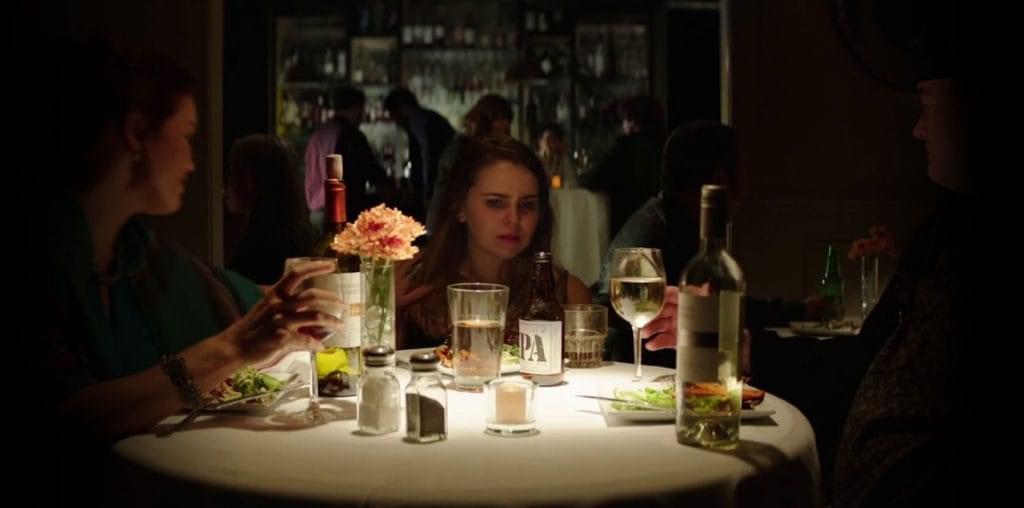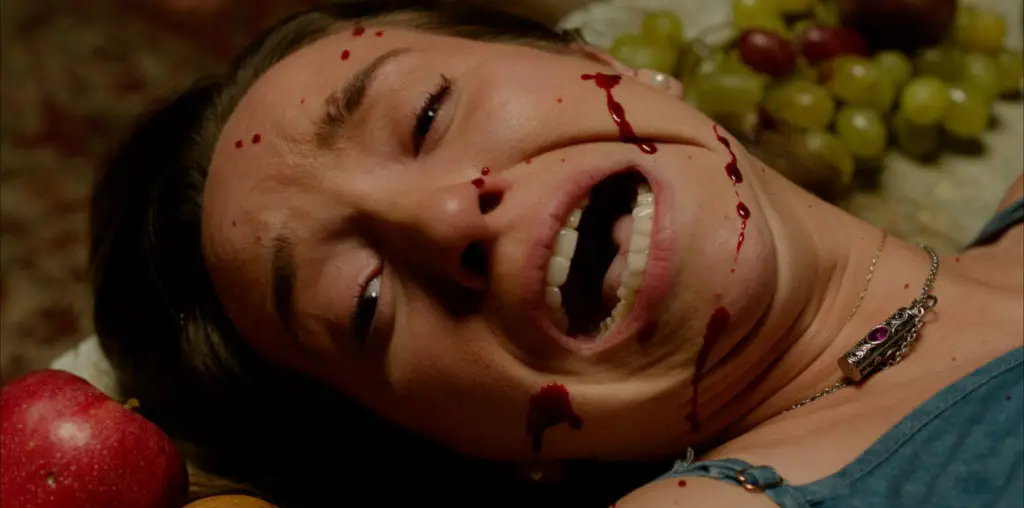
“Playroom” is better shot and acted than your average exploitation film, and a sadistic “shock film” porn director and his minions are a welcome change from the ubiquitous axe murderers and zombies. Unfortunately, the film fails to deliver in the terror department after crossing the line from campy to preposterous. I enjoy sex and violence as much as the next girl, but is it too much to ask for a halfway believable story as well?
Directed by Stephen Maxamillian Stahl, “Playroom” tells the story of a group of five friends whose annual football trip turns into a nightmare when two of them choose the wrong companions for their wild night out. The film begins with two party scenes, one at the end of high school and one in the present day, establishing the bond that has kept the friends together as they grew into adults and formed families of their own. One of the constants in their relationship is an annual football trip that allows them to reminisce over their carefree college days for a weekend.
Soon after the men arrive in their Philadelphia hotel room for the annual festivities one year, it emerges that many of them use the weekend as an excuse to unwind not only with their friends, but with whatever willing women they can find. Two of the men, Nick (Adam Ratcliffe) and Jason (Paul Marron), hook up with a couple of girls who lead them away from their group and eventually to the back room of a fetish strip club. After downing a few mysterious drinks – ordered by the girls – and enjoying a night of debauchery, the friends wake up in restraints and meet the director of a “shock film” (Stephen Lee) in which they are to be the reluctant stars. While the two suffer increasingly brutal sexual tortures, Max (Nicholas Joseph Kattar) and Jimmy (Michael Tranzilli) extend their stay in Philadelphia, refusing to return home until they find their friends.
Part of what disappointed me so much about this film was that, for the first hour, it was promising. Thomas Agnello’s photography tends towards the dark a bit too much, but it helps create a sense of looming dread, along with Kenoka Wagner’s score, that lends an uneasy note to the carefree party scenes that open the film. Agnello’s artistic shots of Philadelphia set up a contrast between the outside world and the underground that underlines the film’s theme. The five lead roles are well written, and the actors have an excellent rapport with each other. Their scenes together have a feeling of familiarity that makes the later horrors they endure more awful. The porn director and his cronies made my skin crawl, and the early torture scenes were visceral and disturbing.
As the film reaches its dénouement, it is the plot that seems to fall apart rather than, as I was hoping, the psyches of the main characters. A policeman giving loaded guns to Max and Jimmy and asking them to help him take down the kidnapper is just the beginning. There is revelation after revelation in the last twenty minutes of the movie, each less credible than the last. By the time bloodshed begins in “Playroom,” after which it quickly becomes relentless, the characters and their plight have become so unbelievable it is hard to care about what happens to them.
Another weakness in “Playroom” is the use of flashback. The one flashback that could have been effective, a bonfire the group set at the end of their teenage party, is overused, and the rest are mostly unnecessary. More than once, a moment in the script that makes clear reference to an event earlier in the film is followed by a flashback to the event in question. Not only is this technique insulting to the viewer’s intelligence, but it seems like its only purpose is to beef up a script that threatened to fall short of feature length. Worst of all, the movie ends on one of these pointless flashbacks.
A little camp is not out of place in a film like “Playroom;” I enjoyed the over-the-top character of the porn director, but when the plot itself became silly, the movie lost its power to shock or frighten. There is clearly a lot of talent behind this film, but ultimately, blood and nudity take precedence over a coherent story. “Playroom” provides a perfect example of the fact that gory and disturbing scenes are not enough, on their own, to make for effective horror.

